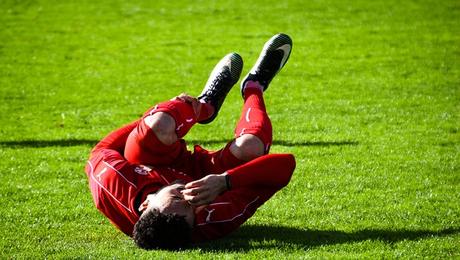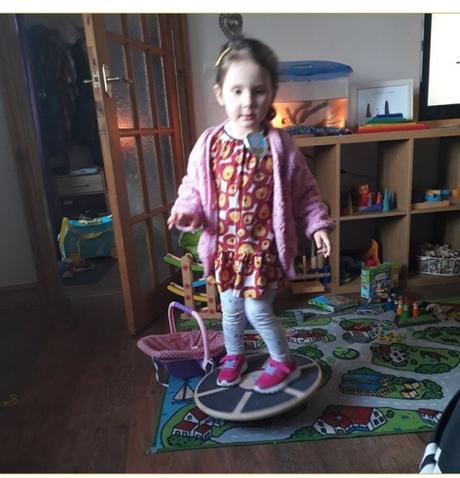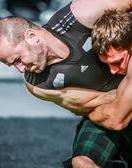This article will look at the most common knee injuries that can arise from both MMA training and competition.
Anatomy of the Knee
The knee joint works like a hinge to bend and straighten the lower leg and is made up of the femur (thigh bone), the tibia (shin bone) and the patella (knee cap). Between the tibia and femur is the meniscus that acts as a shock absorber distributing weight and improves joint stability. The meniscus is what most people consider to be the “cartilage” of the knee. The majority of strength and stability of the knee is provided by ligaments which are strong, elastic bands of tissue that connect bone to bone.
Knee Injuries Due to its structure and its role in weight bearing the knee is a common site for injury in contact sports and activities that rely on rapid rotation during weight bearing such as MMA.
As with all other joints, knee injuries may be divided into 3 categories:
· Single-event (acute) trauma
· Acute-on-chronic injury
· Multiple-repetition (or chronic) injuries.
The principles for management of each type of injury have been covered in a previous article so here we’ll concentrate of specific injuries. The most common injuries for a MMA fighter will usually involve the anterior cruciate ligament (ACL), the medical collateral ligament (MCL) and also the medial meniscus (MM) (cartilage on the inner aspect of the knee).
Ligament and Meniscus Injuries
Ligament injuries can be sustained either from external or internal forces. External forces will be your opponent (or an over zealous sparring partner!) and may come from a strike (to or below the joint) or a submission hold such as knee bar. Internal forces will be physiological stress from incorrect biomechanics such as not allowing the supporting leg to rotate during a round kick or during a clinch or a takedown. Any of these events may rupture not only the ACL, but may also damage the MCL and MM, totally disrupting the stability of the knee.

The ACL is injured during excessive knee rotation (hooking punches and round kicks) on the weight bearing knee if poor biomechanics come into play or during hyperextension (knee bar or locking out the knee on a badly executed kick). The MCL is injured by excessive force bending the knee inward (heavy kick or stamp to the outside of the knee or poor technique/biomechanics in sweeps and throws). The ACL, MCL and MM may all be injured together causing what is known as an “Unhappy triad”. Damage to the MM usually causes pain, swelling, joint locking, or the inability to completely straighten the joint due to a piece of meniscus physically blocking movement in the knee.
So how do you know if you’ve torn your ACL? Well if you feel a sharp pain in the knee, giving way and hear a sudden “pop” followed by immediate swelling with difficulty in full weight bearing then chances are you’ve torn your ACL! If however you only feel a tearing sensation chances are you’ve torn your MCL, not as bad as an ACL rupture….but still bad!
If you think you have suffered an injury to ligament or meniscus go to A&E; straight away and get an assessment of the damage. If you have torn your ACL surgical repair will probably be required followed by between 6 to 9 months of rehab before return to competition. Rehab is detailed and lengthy so a Chartered Physiotherapist will take you through your recovery from day 1 to return to full competition. MCL tears however, are often braced and left to heal without surgery whilst a tear of the meniscus may require arthroscopy (key-hole surgery).
Conservative (Non-surgical) Treatment of Knee Injuries
As always for acute knee injuries PRICE(MM) is standard practice. Protection, Rest, Ice, Compression and Elevation should be applied by the individual, then Medications and Modalities (physical treatments) should be sought from your GP or Chartered Physiotherapist. Bracing may also be used in the early stages. Rehabilitation (Surgical and conservative)
Some points that are important to consider during your rehab are:
Stretching: To maintaining joint range of motion as following injury or surgery as scar tissue forms and soft-tissues contract.
Strengthening: Exercises performed to rehabilitate the injured area back to competitive performance levels.

Proprioception: The ability to know where a body part is in space without looking at it. When proprioception is impaired following a ligament injury the joint may feel unstable which may increase the risk of re-injury. Proprioception training re-educates your body to control the position of an injured joint. It is best performed standing on the injured leg with the eyes closed and measure the amount of time you can remain stable. As you improve make it more difficult by standing on an unstable surface (eg. wobble board or trampette).
Better proprioception will improve your kicks, throws, takedowns and counters and overall balance.
Tip: Even if you are not injured train this aspect of your game; I’ve never worked with an athlete whose proprioception was too good!
Alternative training -Train Around the Injury
One of the major goals of rehabilitation is to maintain a your cardiovascular fitness levels, so for instance when you suffer a lower limb injury instead of roadwork, try aqua jogging with a flotation belt (running upright in a swimming pool without your feet touching the bottom of the pool). You, your coach/trainer and your physio should work together at devising alternative training programmes as soon as possible particularly if you are a competitive fighter. In addition to cardiovascular fitness, you may use the injury period as an opportunity to strengthen weaker areas whether they be physical, mental, technical or tactical.
Return to Training/Competition after Injury
Depending on the nature and severity of the injury, it may take many months of physical therapy for you return to full training or competition. The wide variety of knee injuries creates a wide range of recovery and rehab times with most ligament and meniscus injuries often taking months to rehabilitate whether surgery has taken place or not.
An ACL injury will keep you out of competition for 6 to 9 months. As with any injury, for return to full training/competition you must consider the risk of re-injury and the ability to fight/perform at a satisfactory level. To return to competition there must be a restoration of full strength, endurance, flexibility and proprioception. With repetitive injuries it is important to identify the specific activity that caused the initial injury so that activity can be avoided or training modified.
This is just a brief outline of the knee injuries you may incur during MMA training and competition and a rough guide to treatment and rehabilitation principles. If you have any specific knee problems you will need to seek first hand advice and treatment from an experienced sports injuries Chartered Physiotherapist.
This article is for the purpose of information only and it is not intended to diagnose or treat medical conditions and is not considered to be a substitute for individual medical assessment and advice.

